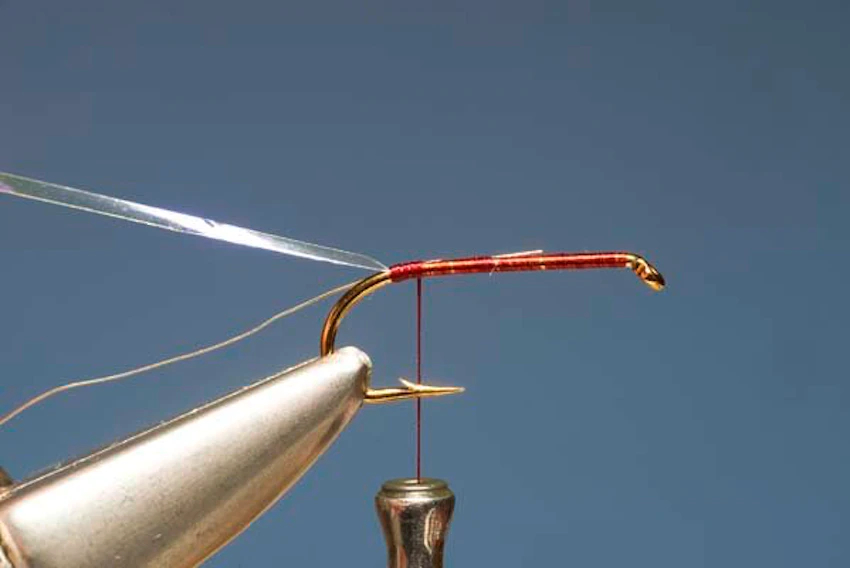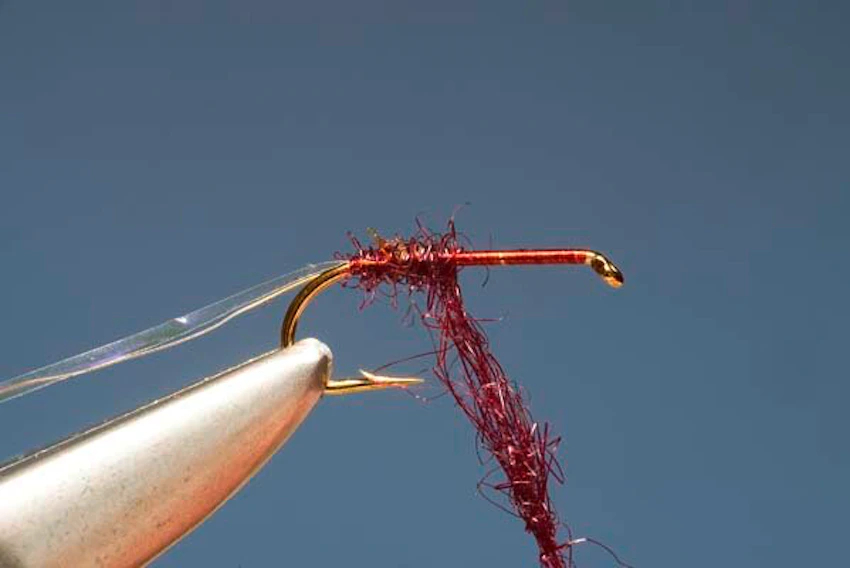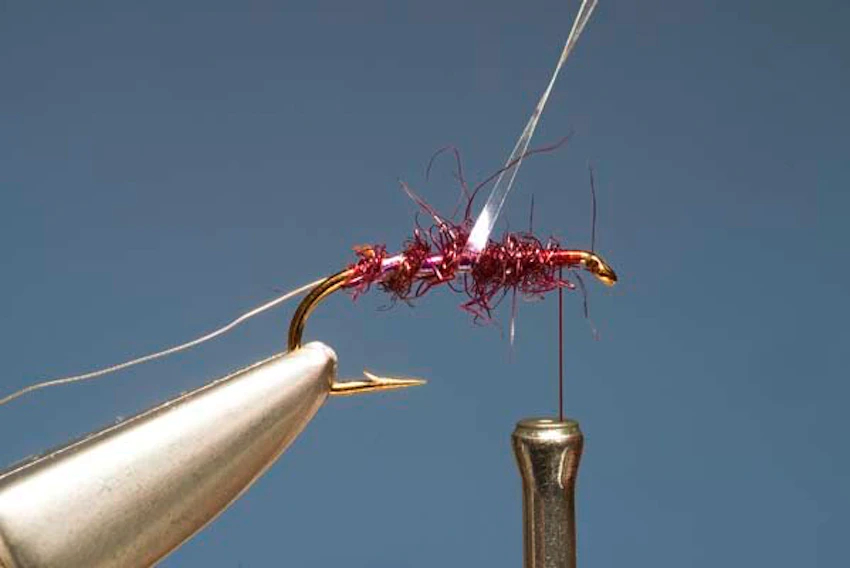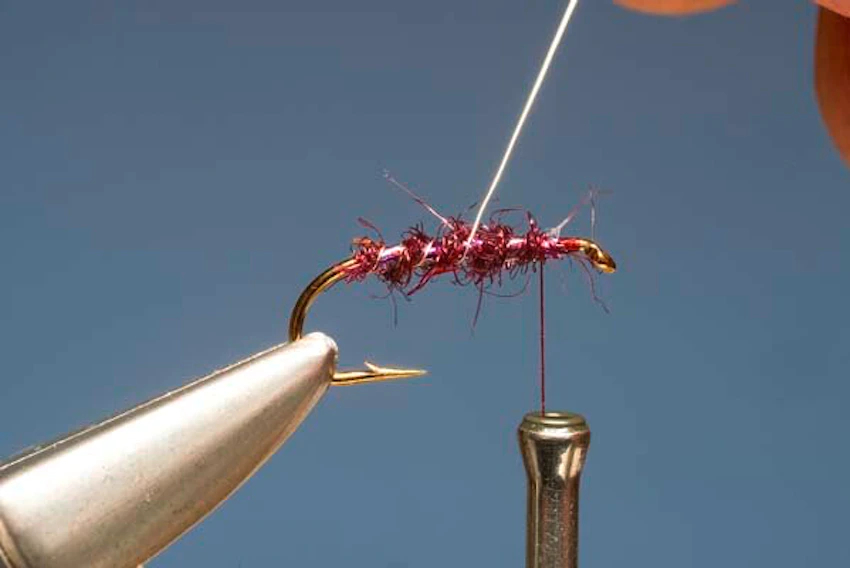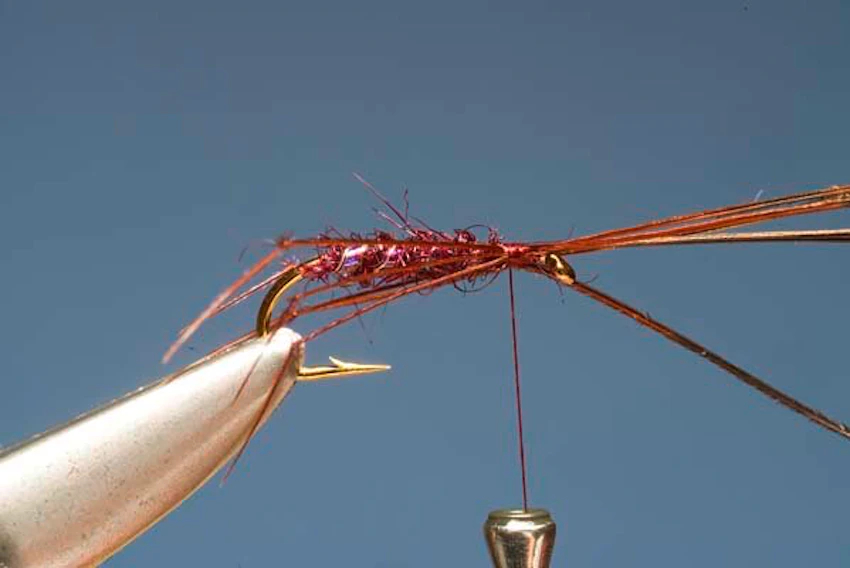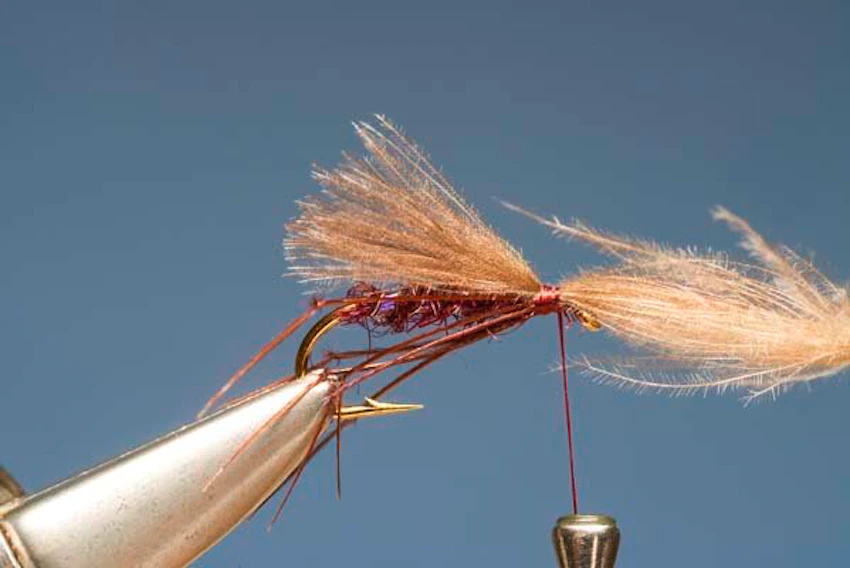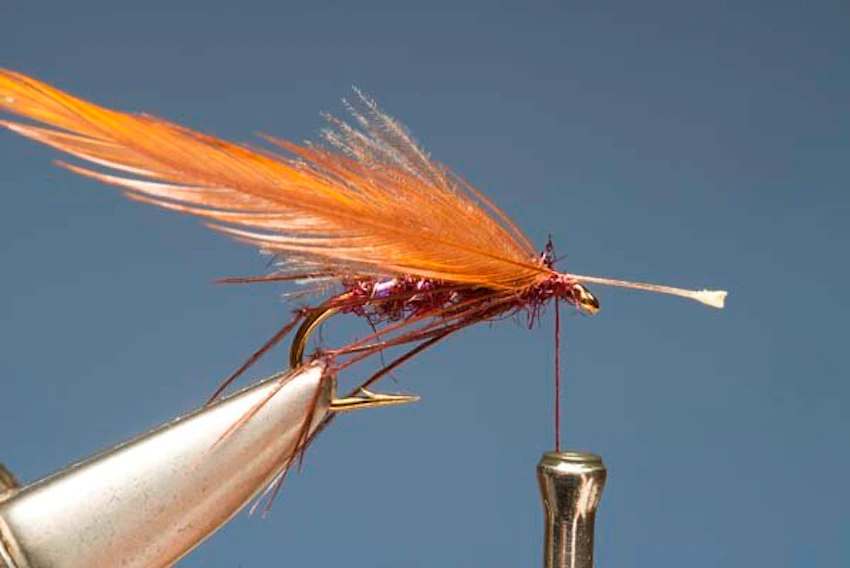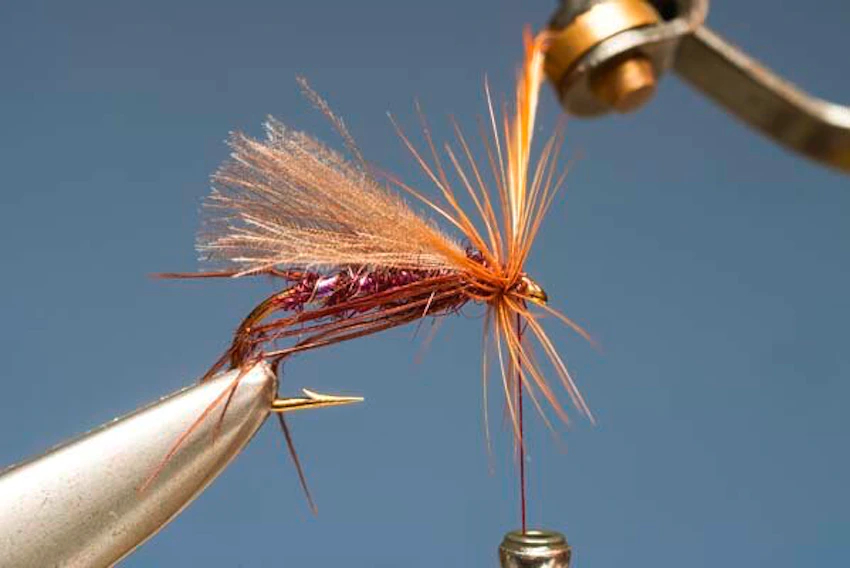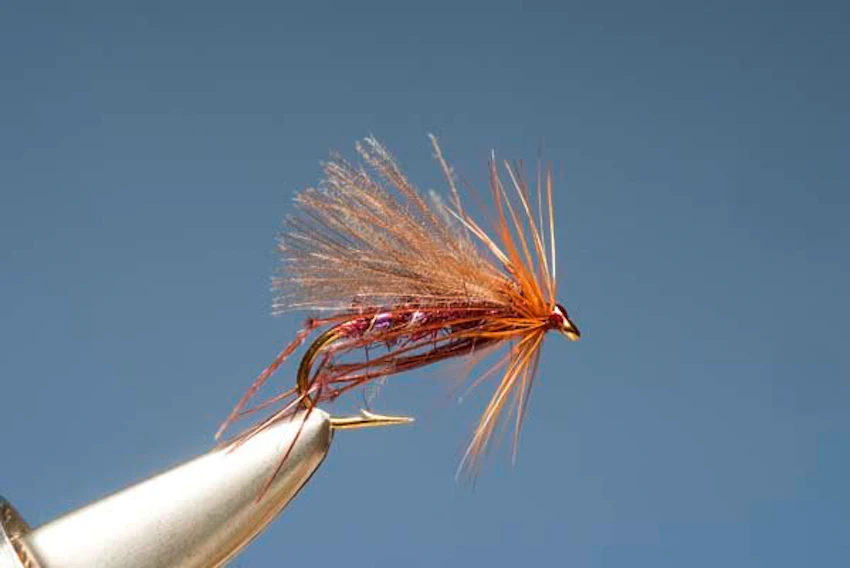HOW TO TIE THE CLARET HOPPER
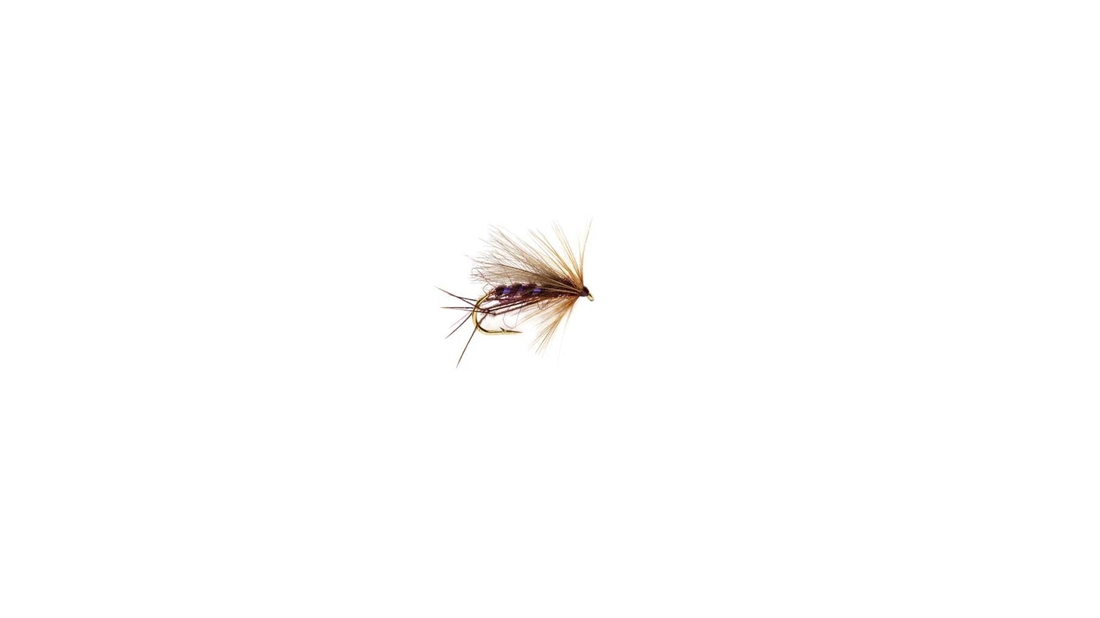
Due, it seems, to higher temperatures and the fact that many reservoirs stay open a lot longer than they used to, fishing a dry continues to be an effective technique right into winter.
There are many different types of stillwater dries but few beat the versatility of the Hopper. It’s effective, not just due to those fine trailing legs, but also because it provides a great template for creating imitations of a variety of insects, both aquatic and terrestrial. Of the latter, a size 12 Black Hopper with a grey CDC wing makes a great imitation of a hawthorn fly. Inject a touch of red into the same dressing and you have a great representation of the red-legged heather fly, an insect closely related to the hawthorn fly and found widely around upland lakes and reservoirs. Tied on a size 8 with a slim tan-coloured body, it makes a great daddy longlegs imitation.
When it comes to imitating aquatic fauna, a red or orange version works well in a buzzer hatch and – while Hoppers are tied in a wide range of hues – the stand-out colour is a rich dark claret. This is especially so when it’s tied using a relatively coarse dubbing, such as seal’s fur. The advantage of this traditional material is that – when the fibres are teased out lightly – they add sparkle and give life.
HOOK: Size 10 -12 medium weight wet-fly
THREAD: Claret 6/0
RIB: Medium ice blue pearl tinsel and fine silver wire
LEGS: Knotted cock pheasant tail fibres
BODY: Dark claret seal’s fur or substitute
WING: Natural CDC
THORAX: Dark claret seal’s fur or substitute
HACKLE: Medium brown cock hackle
1. Fix hook in vice and run thread down to bend. Catch in length of fine silver wire plus length of medium-width ice blue pearl tinsel.
2. Take a pinch of dark claret seal’s fur and dub onto thread to form an even rope. Wind the dubbed fur along the shank in close turns.
3. Keep winding the fur until it covers three-quarters of the shank. Apply evenly-spaced turns of the pearl tinsel along the body.
4. Secure loose end of the tinsel with the tying thread then wind on matching turns of the silver wire to help protect the pearl tinsel.
5. Secure loose end of wire and trim waste. Prepare six knotted strands of cock PT fibres and catch in three either side of the body.
6. Trim off waste ends of PT fibres then prepare a couple of small CDC feathers. Catch them in on top of the body to form the wing.
7. Trim off waste CDC ends then prepare brown soft-fibred cock hackle. Apply small amount of claret fur then catch in hackle by its base.
8. Using a pair of hackle pliers, grasp the hackle by its tip. Wind on three or four close turns of the hackle working towards the eye.
9. Secure the hackle tip at the eye then trim off the waste. Build a small neat head with the tying thread then cast off with a whip finish.




